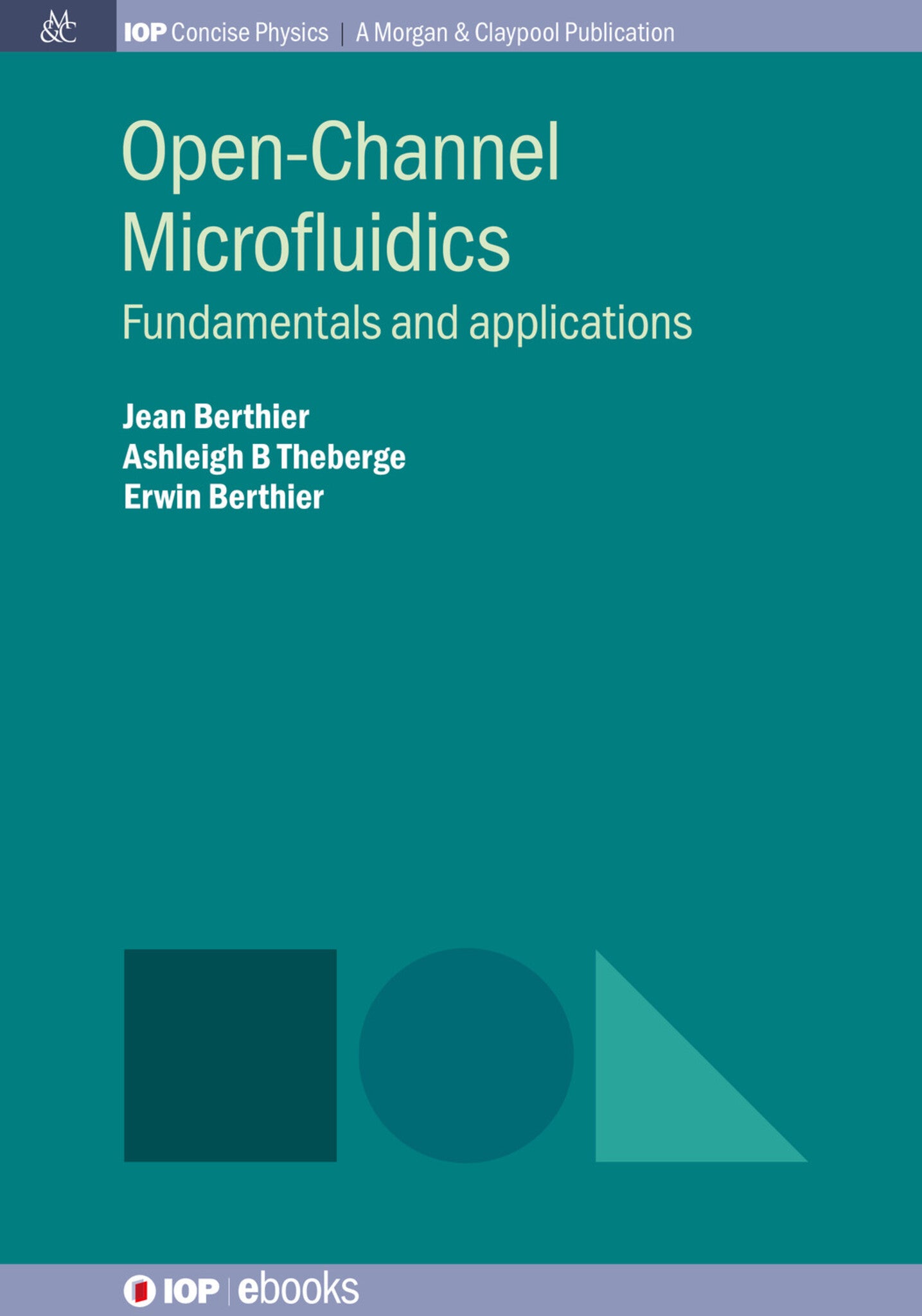We're sorry. An error has occurred
Please cancel or retry.
Open-Channel Microfluidics

Some error occured while loading the Quick View. Please close the Quick View and try reloading the page.
Couldn't load pickup availability
- Format:
-
28 August 2019

Jean Berthier is based at the University of Washington in Seattle. He is the author of Microfluidics for Biotechnology, Microdrops and Digital Microfluidics, The physics of micro-droplets, and Open Microfluidics.
Ashleigh B Theberge is an assistant professor of chemistry at the University of Washington and an adjunct assistant professor of urology at the University of Washington School of Medicine. She leads the Bioanalytical Chemistry for Medicine and the Environment group.
Erwin Berthier is a co-founder and CTO of Tasso Inc, a Seattle-based company developing patient-centric, distributed, health technologies. He is a co-author of Open Microfluidics and currently works within the department of chemistry at the University of Washington.

TECHNOLOGY & ENGINEERING / Materials Science / General, SCIENCE / Life Sciences / Biophysics, SCIENCE / Physics / General

Nomenclature
Introduction: open-channel microfluidics and open microfluidics
1. Paper-based microfluidics
2. Thread-based microfluidics
3. Sessile droplets microfluidics
4. Open-channel microfluidics
5. Book contents
References
Chap.1. Capillarity theoretical basis
Introduction
1.1. Liquid surface tension
1.2. Laplace pressure
1.3. Liquid-liquid surface tension
1.4. Contact with solid surface: Young’s law
1.5. Neumann’s construction
1.6. Work of adhesion, work of cohesion and the Young-Duprė equation
1.7. Solid surface energy: Zisman’s approach
1.7.1. Using Young’s law
1.7.2. Using Zisman’s plot
1.8. Wetting and pinning
1.8.1. Wetting
1.8.2. Pinning and canthotaxis
1.9. Wenzel law
1.10. Cassie-Baxter law
1.11. Capillary rise
1.12. Marangoni convection
References
Chap.2. Condition for capillary flow in open channels
Abstract
2.1. Spontaneous capillary flow in monolithic channel
2.2. Spontaneous capillary flow in composite open channels: the generalized Cassie condition
2.3. Enhanced open capillary flows
2.3.1. Constant additional inlet pressure
2.3.2. Overfilled reservoir: Initial additional Laplace pressure
2.4. Conclusions
References
Chap.3. Flow dynamics in open channels
Abstract
3.1. Background: Spontaneous capillary flow in composite, closed-channels of arbitrary uniform cross-section
3.2. Flow dynamics in open micro-channels of uniform cross section
3.3. Flow dynamics in open micro-channels of variable cross section
3.3.1. Sudden constriction and enlargements
3.3.2. Sudden enlargement with pinning: Open capillary valves
3.3.3. Progressive enlargements
3.3.4. Capillary pumps
3.3.5. Filters
3.3.6. One-way wicking
3.4. The capillary dynamics of non-Newtonian fluids
3.4.1. Shear-thinning fluids
3.4.2. The case of whole blood
References
Chap.4. Open-channel geometries
Abstract
Introduction
4.1. Rectangular channels
4.2. Rectangular channels with imperfect corners
4.3. Rounded channels
4.4. Semi-cylindrical channel
4.5. Suspended channels
4.6. Rails
4.7. Embossed channels
4.8. Fiber bundles and flow caging
4.9. Capillary rise and uphill open capillary flows
4.10. Capillary networks
4.10.1. Example #1
4.10.2. Example #2
4.10.3. Capillary flow after a bypass or a derivation
Conclusion
References
Chap.5. Capillary filaments
Abstract
5.1. Capillary filaments: the Concus-Finn condition
5.2. The case of V-grooves
5.3. Capillary filaments in open-channel turns
5.4. Capillary filaments in non-uniform channels
5.5. Detached capillary filaments
5.6. Metastable capillary filaments
5.7. Capillary filaments driving SCF
5.8. Dynamics of capillary filaments
5.9. Drying of capillary filaments
5.10. Capillary filaments stopped by rounded wedges
Conclusion
References
Chap.6. Two-phase open-channel capillary flows
Introduction
6.1. Plugs in uniform cross-section open-channels
6.1.1. Quasi-steady state approach: SCF condition in presence of plugs
6.1.2. Plugs dynamics in open-channel capillary flow
6.1.3. Conclusions
6.1.4. Capillary wagons
6.2. Bypasses and bifurcations
6.2.1. Bifurcations
6.2.2. Bypasses
6.3. Plugs and capillary filaments
6.3.1. Plugs moved by capillary filaments
6.3.2. Plugs blocked by reverse capillary filaments
Conclusions
References
Chap.7. Applications
Abstract
7.1. Materials and fabrication
7.2. Space: design of vanes
7.2.1. Space cup
7.2.2. Vanes
7.3. Microfluidics
7.3.1. Capillary channels on paper
7.3.2. Evaporation capillary pumping
7.4. Biology, biotechnology and medicine
7.4.1. Gel electrophoresis
7.4.2. Micro-Dots for cell studies
7.4.3. Mimicking lungs
7.4.4. Micro-device for cell behavior studies
7.4.5. In-vivo sensors
7.4.6. Open-channel microfluidics for whole blood analysis
7.5. Biochemistry: Liquid-liquid extraction
Conclusion
References
Chap 8: Epilog
References



